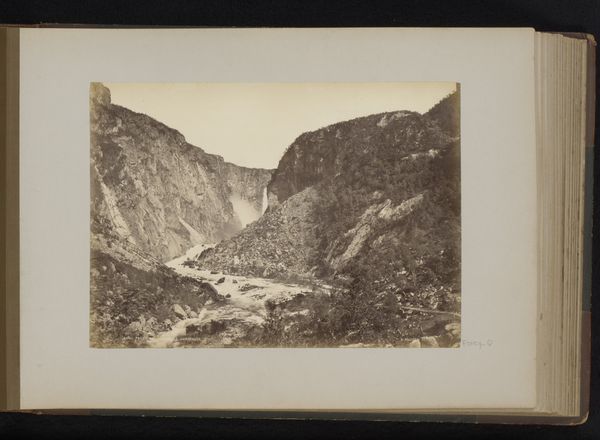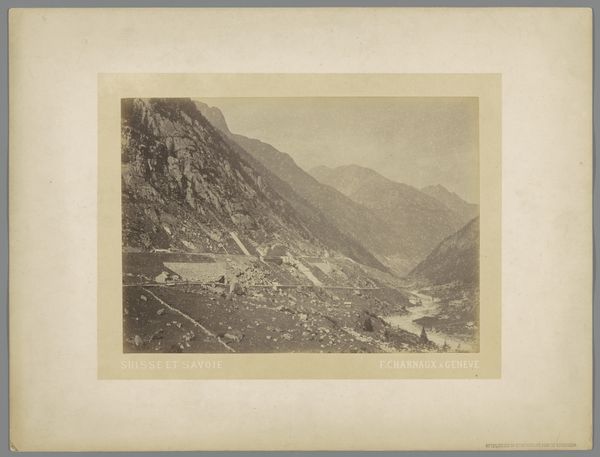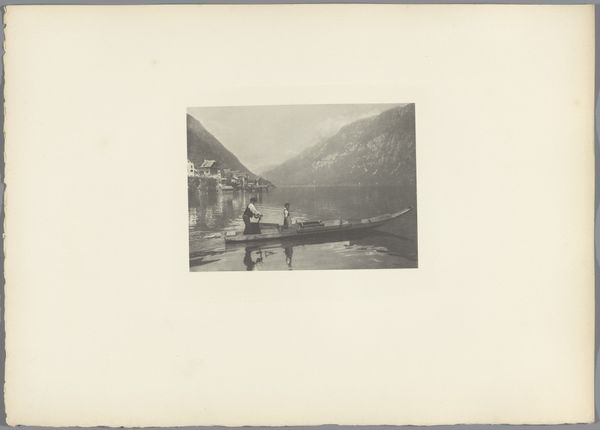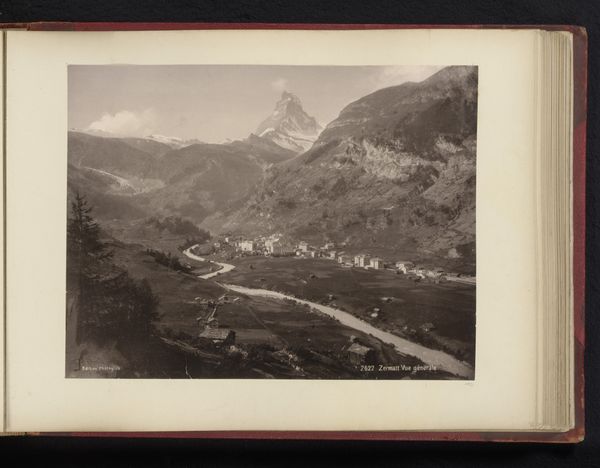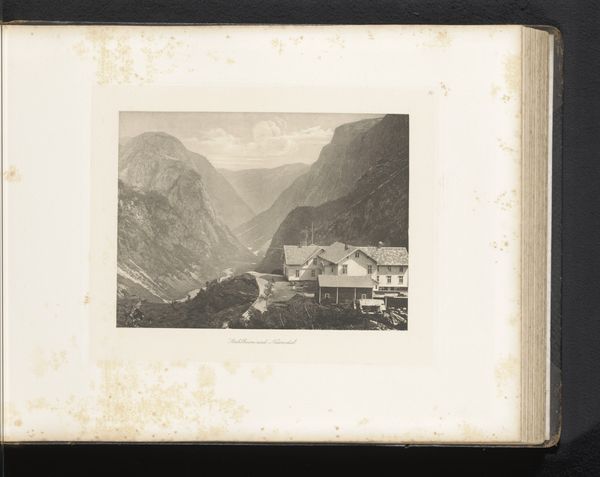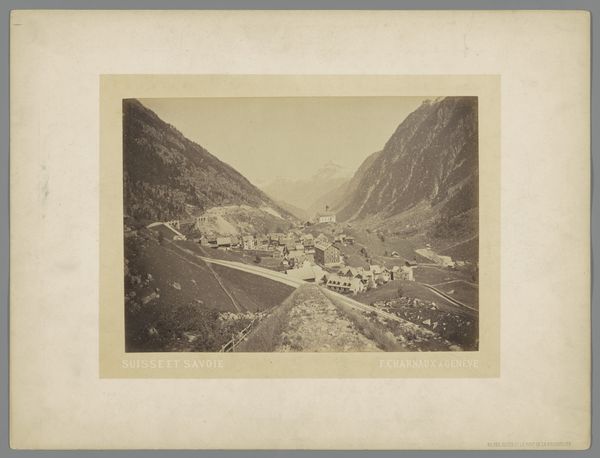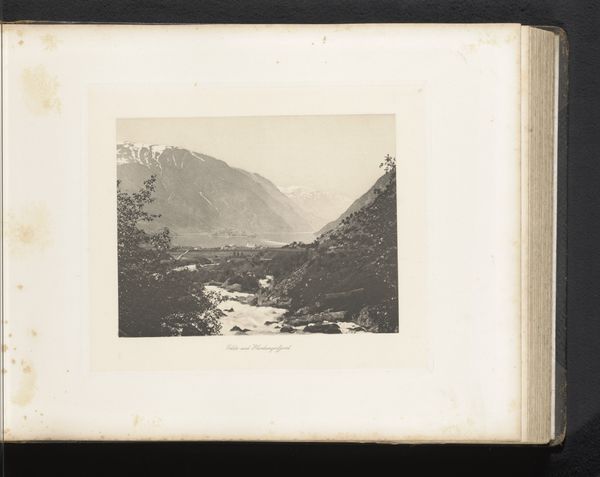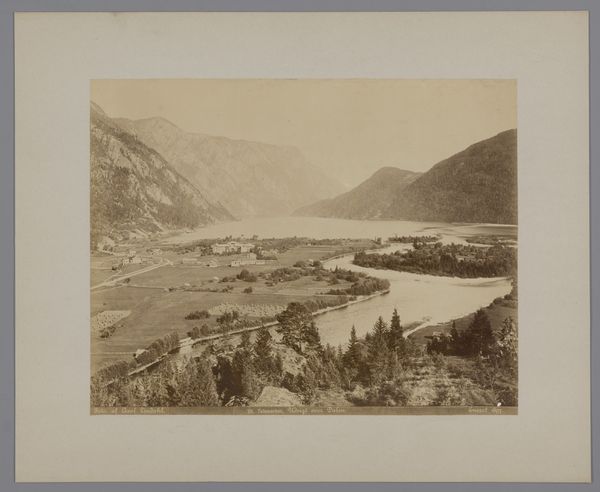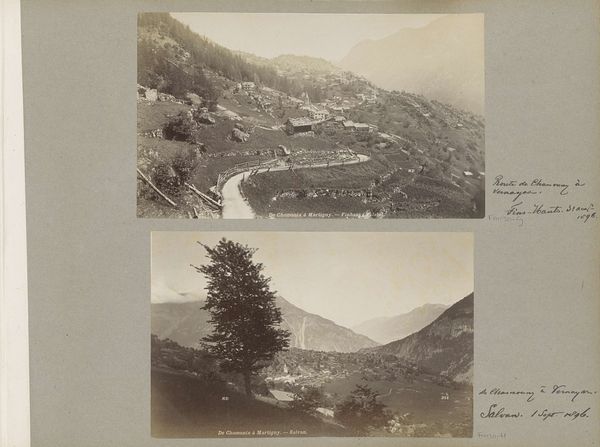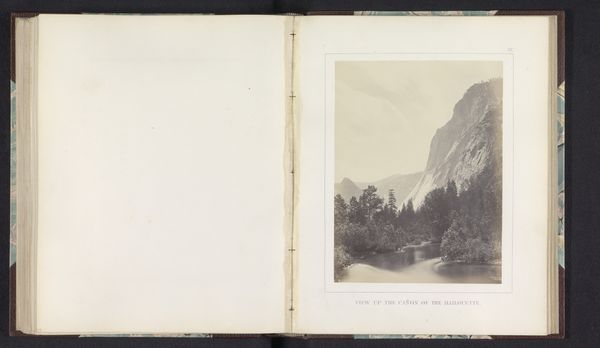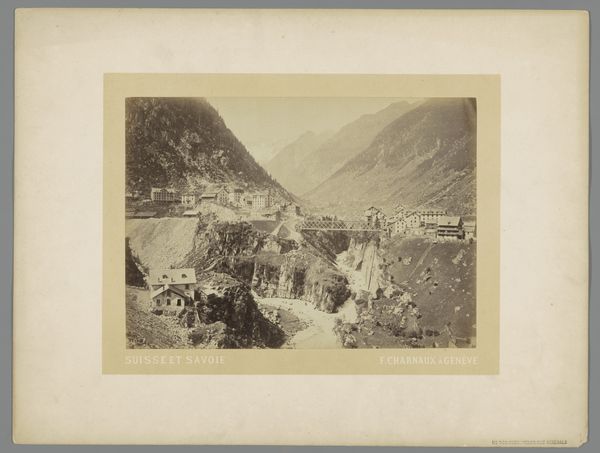
photography
#
still-life-photography
#
pictorialism
#
landscape
#
river
#
photography
#
mountain
Dimensions: height 163 mm, width 215 mm
Copyright: Rijks Museum: Open Domain
Curator: This photograph captures a view of the Romsdalen valley in Norway. It was created in 1893 by Brødrene Brunskow. Editor: What strikes me immediately is the sheer stillness. The glassy river, the monumental mountains softened by mist... it's like a forgotten world. Almost melancholic. Curator: Indeed. Brunskow’s image aligns with Pictorialism, a late 19th-century movement where photographers sought artistic effect and aimed to demonstrate that photography was a legitimate artistic medium akin to painting. They frequently employed techniques like soft focus and printing processes that lent their images a painterly quality. Editor: It feels deliberate. Those muted tones seem less about capturing a literal scene and more about evoking a feeling. Did these artists see themselves in competition with landscape painters? Curator: Absolutely. The rise of photography caused significant anxiety within the established art world. Photography challenged painting’s long-held role in visually documenting the world. By adopting stylistic techniques and pictorial language derived from painting, photographers aimed to legitimize photography's place amongst the fine arts. Editor: It's ironic, isn’t it? These majestic landscapes—silent witnesses to the passage of time—are being used in a power play within the art world. There’s a real sense of grandeur here that's being subtly weaponized to claim territory in the cultural arena. The river itself becomes this flowing symbol of change, not just in the landscape, but in the very definition of art. Curator: Precisely. By imbuing their photographs with aesthetic values recognized in traditional painting, artists like Brunskow elevated photography to a higher art form, capable of evoking emotions and conveying artistic intentions. This scenic vista thus became a battleground in the wider war about representation. Editor: It makes me wonder how perceptions shift over time. What once was groundbreaking eventually feels traditional. And now, staring back at this century-old photo, I realize that the argument seems to have faded away leaving us with just...the stillness. Curator: Well, it highlights that the history of art is very much a living narrative, where images function within the ever-shifting landscape of social and cultural dialogues. Editor: I like that. Next time I encounter another serene photograph, I won’t be surprised if I see some battles taking place right beneath the surface.
Comments
No comments
Be the first to comment and join the conversation on the ultimate creative platform.

